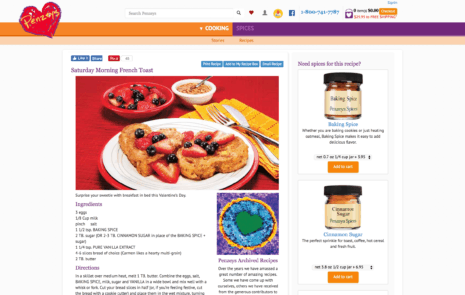
Discover a tool that makes 24 communications jobs easier to do
Discover a tool that makes 24 communication jobs easier to do
Does your company have one crystal-clear, consistent, and compelling strategic message? Every company needs its own singular message as a focal point for marketing, sales, and communications.
“The heart of marketing is your message,” says Flint McGlaughlin of MECLABS. “And the heart of your message is your value proposition.”
With one strategic message for your company, you hold your audience’s attention over time by telling them what’s in it for them. That’s true both for companies and live performers.
As Bruce Springsteen said, “Sustaining an audience is hard. It demands a consistency of thought, of purpose, and of action over a long period of time.”
But not every company’s leaders agree on what a company’s strategic message should be. To get everyone on the same page, co-create your message in a Message Map workshop.
Learn more: What is a Message Map? Here’s how to create your own.
Consistent Message
A consistent message is crucial to create a unique customer experience that converts customers into fans. As McKinsey & Company said, “It may not seem sexy, but consistency is the secret ingredient to making customers happy. However, it’s difficult to get right and requires top-leadership attention.”
Once you create your singular message, you get a bigger payoff from all the company’s investments in marketing and communications. Companies that spend to deliver an unclear or inconsistent message are pouring money down the drain. As Howard Tullman, former CEO of business incubator 1871, counsels start-up companies, “Don’t raise your voice. Improve your arguments.”
Why do you need your own strategic message?
Why does your company need its own strategic message? Because you need:
- One message, since audiences can’t absorb two or more.
- A crystal-clear message, so you don’t leave audiences guessing about your intended meaning.
- A consistent message, since consistency builds credibility over time, says neuroscientist Dr. Carmen Simon.
- A compelling message, since people make decisions emotionally, then justify them by cherry-picking relevant facts.

One message, many jobs to do
Message Maps
That’s why marketers and communicators are creating Message Maps to guide all of their companies’ internal and external communications.
When you co-create your Message Map with executives and internal clients, you can align everyone behind one company story. With training and practice, everyone can sing from the same songbook.

This practice increases support for your message. And it streamlines the nightmare of review processes because your message is pre-approved all the way up to the CEO.
A basic Message Map helps you hook your audience in as little as 7 seconds or 23 words. You always have an elevator speech that’s ready to go, on demand. Here’s an example from the Virgin Chicago Hotel.

A Message Map helps you scale up your message gracefully as needed to fit any medium or occasion – from 7 seconds to 2 minutes, 5 minutes, 20 minutes, or more.
Most small companies need only one Message Map to tell what they’re all about and convey their value proposition clearly. Bigger companies, such as the Fortune 500s we’ve worked with, often need a dozen or more Message Maps to guide communications on a variety of specific topics.
When you create a full set of Message Maps, they become a company’s single source of truth. Over time, people will look to you to find out what is true and what is misinformation.
Message Maps help you prepare
Use Message Maps to prepare executives and spokespersons in advance for proactive and reactive communications such as employee meetings and news interviews. Create internal and external Message Maps in advance of the need, to anticipate future needs for content in communications, marketing, sales, investor relations, and human relations.
In big companies, communications and marketing teams have lots of work to do to get their company’s message aligned. For example, when my team brought Message Maps to a Fortune 100 company, it enabled us to deliver a singular message to 60,000 employees, millions of customers, and 1 million shareholders, year after year.
We help clients create Message Maps to address the 24 strategic communication needs on the checklist below. Use this strategic communications checklist below to identify gaps, so you can prepare to address your company’s future message needs, end to end.
Strategic Communications Checklist
Is your message ready to communicate on your key topics, with any internal or external audience, around the clock? By creating Message Maps to document your strategic message, you become ever-ready to communicate on all these topics:
- The company’s story, including its purpose, values, growth strategy, leadership team, and performance milestones
- New technology, product, and service launches
- Each newsworthy event, such as executive changes, reorganizations, mergers, acquisitions, divestitures, and responses to activist shareholders
- Investor relations, including pitch decks, quarterly and annual results, annual reports, annual meetings, sustainability, and environmental, social and governance (ESG) reports
- Speeches and presentations
- Each business unit’s story
- Each geographical region’s story (continent, country, region, state, metro area)
- News conferences and interviews
- Crisis communications
- Key products and services
- Employee information and news
- Employee discounts
- Recruiting new employees
- Company websites, magazines, newsletters, marketing campaigns, and blogs
- Industry analyst relations
- Professional and industry association relations
- Issues management
- Government relations and lobbying
- Community relations
- Foundations, charitable activities, fundraising
- Key topics such as safety, health care, equity, inclusion, diversity, and sustainability
- Trade shows and events
- Union negotiations and elections
- Retiree and alumni relations.
Your set of Message Maps is like a set of Russian nesting dolls. All of them present one consistent message. But each is packaged in a different size to meet the needs of different audiences, various media, and particular occasions.
When your Message Maps are ready to meet all these needs, you are truly prepared for whatever comes.
To assess the readiness of your company message, contact us for a free, 30-minute message assessment at: info@crystalclearcomms.com.
Related Posts
Top 100 Content Marketing Question: How to help subject matter experts (SMEs) understand the need for content marketing?
To help SMEs understand content marketing, start with one idea. There are only 2 kinds of pages on the Internet, as Andy Crestodina observes...
3 Tips to Avoid Using Unnecessary Words
Avoid using unnecessary words. The goal of all marketers is to get their company’s story heard. We know we need to cut through the...
Two ways to tell your story: generic or spicy
Too many business stories don’t break through because they’re too boring. Predictable. Plain vanilla. To win attention, spice up your story Why are many...
How Customer Questions Blaze the Content Marketing Trail
To buy, customers need answers, and they need them now. Your customers’ path to purchase is strewn with questions. Here are 5 ways to use customer...





